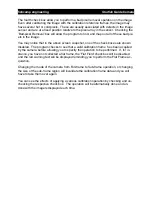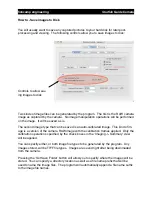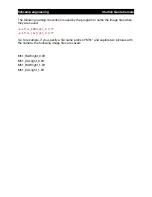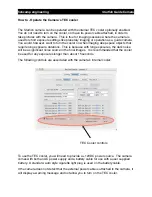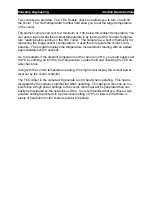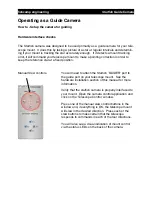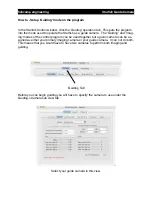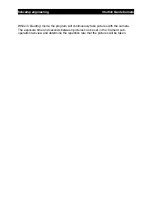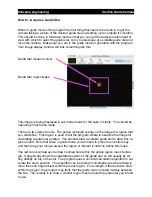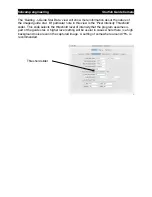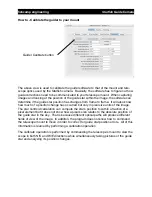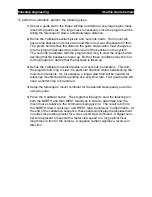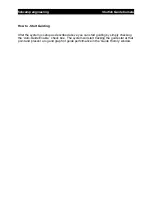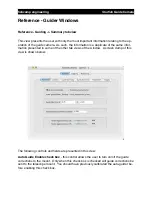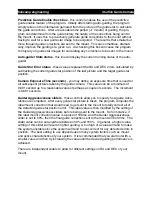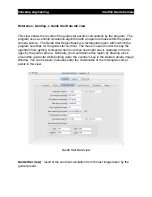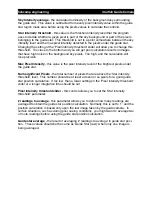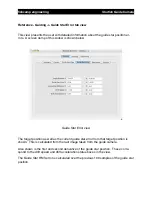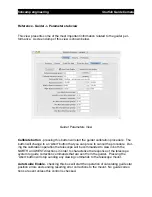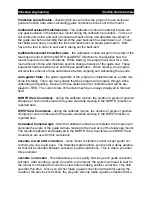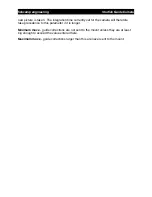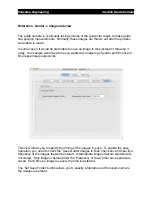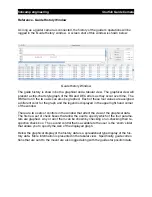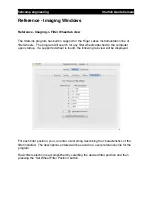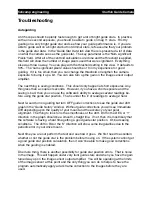
Predictive Guide Enable check box
- this control enables the use of the predictive
guide enable feature of the program. Initially after starting auto-guiding, the program
simply relies on the information garnered from the picture of the guide star to calculate
the guide corrections. After a reasonable time period (~1 minute) of guiding, the pro-
gram can determine from the guide history the nature of the corrections being sent to
the mount. It uses this to pro-actively generate guide corrections to the mount without
having to wait for a new guide star image to be acquired. The result is that smaller but
more frequent guide corrections are sent to the mount. This can sometimes, dramati-
cally, improve the guiding of a given run. Un-checking this box will cause the program
to only rely on guide star images for calculating any corrections to be sent to the mount.
Auto-guider State status
- this line will display the current running status of the auto-
guider.
Guide Star Error status
- these values represent the RA and DEC errors calculated by
subtracting the current guide star position of the last picture and the target guide star
position.
Camera Exposure Time (seconds)
- you may define an exposure time that is used for
all subsequent pictures taken by the guide camera. This value can be a minimum of
0.001 second up to a reasonable value of perhaps a couple of seconds. The increment
is 0.001 seconds.
Guider Aggressiveness sliders
- these controls allow you to specify how guide calcu-
lations are computed. After every guide star picture is taken, the program computes the
ideal mount correction that would need to get sent to the mount to totally correct all of
the detected guide star position error. This ideal value is then modified by the setting of
the Guider Aggressiveness sliders before being sent to the mount. So for instance, if
the ideal mount correction value is a pulse of 100ms, and the Guider Aggressiveness
slider is set to 50%, then the final guide correction sent to the mount will be 50ms. The
slider value can be set anywhere between 50% and 150%. In general, a higher value
setting of this slider will result in tighter guiding. A too high of a value will tend to make
the system unstable since the system will tend to over-correct for any detected errors in
position. The best setting to use depends upon many system factors such as mount
and optics characteristics of your system. It is recommended that you start out with a
smaller value and then try increasing the value until the desired guiding performance is
achieved.
There are independent sliders to allow for different settings on RA and DEC of your
mount.
fishcamp engineering
Starfish
Guide Camera

